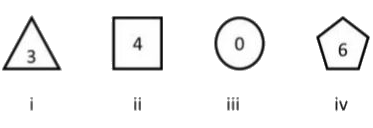Find out the odd one:
(i) Family, Class, Taxon, Phylum
(ii) indica, Ficus, Mangifera, Brassica
(iii) Plantae, Chordata, Tracheophyta, Eucalyptus
To solve the question of finding the odd one out in each of the three sets, we can follow these steps:
Step 1: Analyze the First Set
- Given Options: Family, Class, Taxon, Phylum
- Taxonomic Categories: Family, Class, and Phylum are all recognized taxonomic ranks in the biological classification system.
- Taxon: This term refers to any unit of classification, which can include any level of the hierarchy (species, genus, family, etc.).
- Conclusion: The odd one out is Taxon because it is a broader term that encompasses all taxonomic categories, while the others are specific ranks.
Step 2: Analyze the Second Set
- Given Options: Indica, Ficus, Mangifera, Brassica
- Indica: This is a specific epithet, which is part of the scientific name of a species (e.g., Oryza sativa indica).
- Ficus, Mangifera, Brassica: These are all genus names, which are higher in the taxonomic hierarchy than species.
- Conclusion: The odd one out is Indica because it represents a species name, while the others are genus names.
Step 3: Analyze the Third Set
- Given Options: Plantae, Chordata, Tracheophyta, Eucalyptus
- Plantae: This is the kingdom that includes all plants.
- Chordata: This is a phylum that includes animals with a notochord.
- Tracheophyta: This is a division (or phylum) that includes vascular plants.
- Eucalyptus: This is a genus of flowering trees and shrubs.
- Conclusion: The odd one out is Chordata because it pertains to animals, while the others are related to plants.
Final Answers:
1. First Set: Taxon
2. Second Set: Indica
3. Third Set: Chordata
---
- Given Options: Family, Class, Taxon, Phylum
- Taxonomic Categories: Family, Class, and Phylum are all recognized taxonomic ranks in the biological classification system.
- Taxon: This term refers to any unit of classification, which can include any level of the hierarchy (species, genus, family, etc.).
- Conclusion: The odd one out is Taxon because it is a broader term that encompasses all taxonomic categories, while the others are specific ranks.
- Given Options: Indica, Ficus, Mangifera, Brassica
- Indica: This is a specific epithet, which is part of the scientific name of a species (e.g., Oryza sativa indica).
- Ficus, Mangifera, Brassica: These are all genus names, which are higher in the taxonomic hierarchy than species.
- Conclusion: The odd one out is Indica because it represents a species name, while the others are genus names.
- Given Options: Plantae, Chordata, Tracheophyta, Eucalyptus
- Plantae: This is the kingdom that includes all plants.
- Chordata: This is a phylum that includes animals with a notochord.
- Tracheophyta: This is a division (or phylum) that includes vascular plants.
- Eucalyptus: This is a genus of flowering trees and shrubs.
- Conclusion: The odd one out is Chordata because it pertains to animals, while the others are related to plants.
1. First Set: Taxon
2. Second Set: Indica
3. Third Set: Chordata
Topper's Solved these Questions
- THE LIVING WORLDBOOK - MODERN PUBLICATIONCHAPTER - THE LIVING WORLDEXERCISE - COMPETITION FILE (E. ADDITIONAL MULTIPLE CHOICE QUESTIONS :)
19 Videos
- STRUCTURAL ORGANISATION IN ANIMALSBOOK - MODERN PUBLICATIONCHAPTER - STRUCTURAL ORGANISATION IN ANIMALSEXERCISE - CHAPTER PRACTICE TEST (Section -E)
2 Videos
- TRANSPORT IN PLANTSBOOK - MODERN PUBLICATIONCHAPTER - TRANSPORT IN PLANTSEXERCISE - CHAPTER PRACTICE TEST
15 Videos
Similar Questions
Knowledge Check
Find the odd one out (w.r.t. class) :
AAlbugoBPythiumCAspergillusDPhytopthoraFind the odd one out.

A. iii
B. ii
C. i
D. ivAABBCDDCFind out the correct labelling .

(i) Thyroid and parathyroid
(ii) Hypothalamus
(iii) Thymus
(iv) PituitaryAa-v, b-ii , c -iv , d-i,e-iiiBa-iv,b-v,c-ii,d-I,e-iiiCa-v,b-iv,c-ii,d-iii,e-iDa-ii,b-iv,c-v,d-iii,e-i
Pick out the odd ones from among the following compounds on the basis of their medicinal properties. (i) Luminal, seconal, phenacetin, equanil (ii) Chloroxylenol, phenol, chloramphenicol, bithional.
View SolutionPick out the odd ones from the following sets:(i) Sulphur, Argon, Solid CO2, Diamond ,. (ii) SiC, Quartz,BaO,Graphite
View SolutionConsider the following statements
(i) Genus comprises a group of related species
(ii) Taxon represents a taxonomic group of individual organisms (iii) Family comprises a group of related genera (iv) Taxonomic category class includes related order. of the above statements
View SolutionConsider the following statements:
(i) Genus comprises a group of related species
(ii). Taxon represents a taxonomic group of any ranking
(iii). Family comprises a group of related genera
(iv). Taxonomic category 'class' includes related phyla Of the above statements:
View SolutionRead the following statements and select the incorrect ones.
(i) Circulatory system in arthorpods is of closed type.
(ii) Parapodia in annelids help in swimming.
(iii) Phylum Mollusca is the second largest animal phylum.
(iv) Aschelminthes are dioecious.
View Solution

